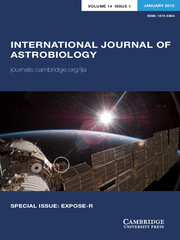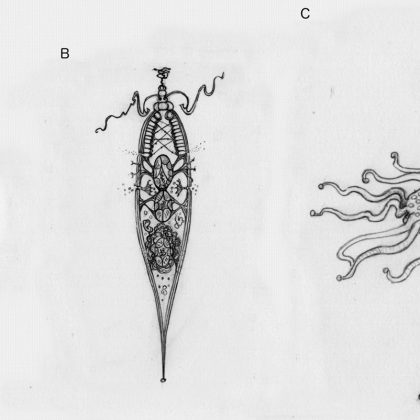Seeking stone-age “little green farmers” can complement our search for alien intelligence
Sci-fi traditionally concentrates on high-tech aliens, such as those in “Independence Day”. But could real extra-terrestrial technology be more like that of Star Wars’ stone-age Ewoks, than the interplanetary travellers of Close Encounters?
Humans have been extensively modifying the environment for timescales around a hundred thousand years – with aboriginal fire clearance in Australia being a good example. Another example of primitive societies drastically modifying the landscape is extinction. Loss of species, such as the mammoth, often triggered huge ecosystem change. Similarly, introduction of invasive species can change the landscape – like rabbits did, in Australia. These large-scale changes are clearly visible from space – and this may also be true over interplanetary distances, given favourable circumstances.
In our new paper, “Detection of pre-industrial societies on exoplanets“, Daniele Visioni and I show how searching for primitive civilisations may be possible, without any dramatic leaps in telescope technology. We offer quantitative evidence that this can be done, using telescopes similar to today’s. Spotting changes in planetary brightness and colour – like those caused by wheat harvests – may allow us to discover worlds full of “little green farmers”. We analyse idealised planets in detail, showing that detection is feasible. The best search candidates are large planets with small oceans, orbiting small, dim stars.

Even major cities could potentially be spotted, if they are vulnerable to occasional large fires. The Great Fire of London is a fine example of such a conflagration, on a pre-industrial planet. A deliberately-set fire, such as in a war, may offer a far larger simultaneous burn area – meaning more light reaching our telescopes. Additionally, smoke can potentially be observed afterwards, especially on otherwise smoke-free planets.
Stone age doesn’t mean bone-headed. Smart aliens may be technologically trapped by a lack of resources, such as metal ores. Just like Earth’s ancient civilisations, they may still have sophisticated astronomy. Their understanding of the universe may lead aliens to suspect that they are visible from other planets. They may therefore change their behaviour, to attract or avoid attention.
Such alien civilizations may be sci-fi fantasy – but we won’t know for sure, unless we look. Our paper shows a promising way to do this. Instead of searching for radio-capable aliens, we might be better off searching for little green farmers – as such civilisations may be far more numerous.
Article: Detection of pre-industrial societies on exoplanets. DOI: https://doi.org/10.1017/S1473550420000361
Authors: Lockley, A., & Visioni, D.
Published in International Journal of Astrobiology and available to read for free until 8 March 2021







